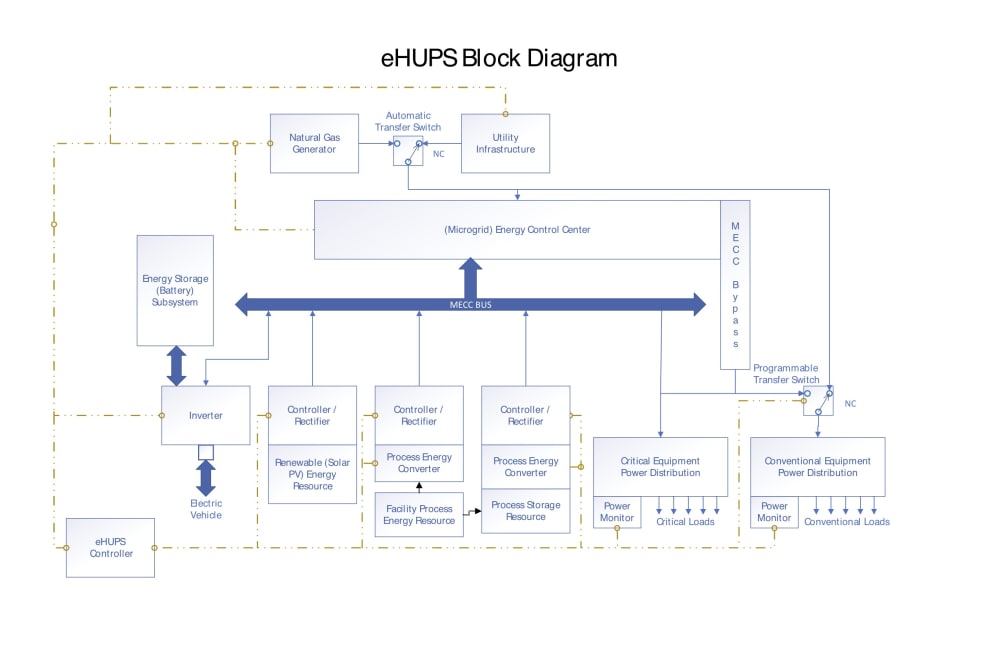I am working on an Energy Harvesting Uninterruptable Power Supply (eHUPS) to increase capabilities for advanced test facilities. This innovation incorporates renewable energy technologies to dramatically enhance UPS system applications over a wide range of market sectors.
Increased capabilities:
UPS systems are widely used for critical equipment resilience. Facilities use UPS systems on loss of electric service so valuable (test) data is not lost, life safety systems are not disabled, (manufacturing) processes are not interrupted, information technology services continue to operate, etc. UPS designs must trade off the hardware costs, the amount of equipment that can be supported (power rating), and the length of time power can be maintained (battery capacity). Gas powered generators can be added to the UPS for 100% system resilience, which indefinitely extends the time power can be maintained but relies on environmentally harmful fossil fuels.
An eHUPS combines batteries and generators with renewable resources like roof mounted solar panels, facility process energy recovery, and energy conservation to supply power during service outages. These sustainable energy sources alter the cost trade off analysis so more equipment can be supported for long periods of time. In test facilities, outage responses can be enhanced from computer and automation equipment performing orderly test shutdowns to maintaining a reduced level of testing operations. Likewise, office building capabilities during power outages can increase from just keeping critical data servers running to sustained operation of computer IT services and conventional building systems for minimal work loss.
Direct impact on global warming:
The eHUPS incorporates alternate energy resources and energy conservation principles in its design. This innovation not only increases system capabilities during power outages, but it also reduces electric service needs during normal operating conditions. Facility carbon footprints are sustainably reduced by using harvested renewable energy. And for cases where 100% system resilience is necessary, an eHUPS implementation dramatically reduces fossil fuel consumption by gas generators.
Load side energy harvesting paradigm:
Electric utility companies are sensitive to legacy power plant impacts on global warming and the percentage of renewable solar and wind energy resources is increasing. Unfortunately, a supply side electrical grid transition approach is technically flawed, and economic constraints will result in too little, too late. To properly address electric grid global warming impacts, a (new) load side energy harvesting paradigm is necessary. Supply side renewable energy like solar fields vary with sunlight making them unreliable and non-dispatchable, where load side harvesting varies electric service demands in a way that is more easily managed by the grid. Solar fields coupled with grid level battery storage helps address technical reliability issues, but presently at non-competitive electricity costs.
Feasibility and team commitment:
It is straight forward to build a basic eHUPs using commercially available products. Total returns of an eHUPS implementation are dependent on system power rating. The larger the serviceable load, the greater the potential return on investment through electric utility bill and carbon footprint reductions. I am committed to pursuing eHUPS for business development and to help address global warming.
Like this entry?
-
About the Entrant
- Name:James Whiteford
- Type of entry:individual
- Patent status:none

